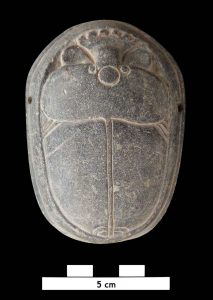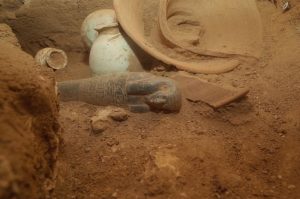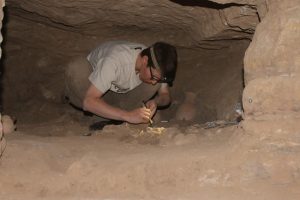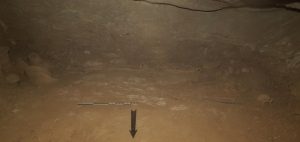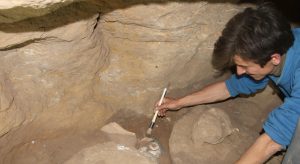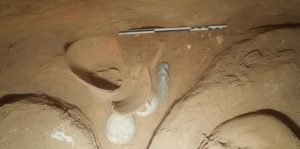Khnummose’s shabti is, together with the stone heartscarab, definitely the highlight from Chamber 6 in Tomb 26. The shabti belongs to a homogenous group of five stone shabtis from Egyptian officials, found at Aniba, Toshka and Sai, and identified by Ann Minault-Gout as originating from one workshop, dating from the mid-18th Dynasty (Minault-Gout 2012). A common origin might explain why on SAC5 350 the name of Khnummose was inscribed in different hand writing, obviously at a later stage than the remaining text with Book of the Dead Chapter VI. In addition, the raw material used for this group of shabtis is not local to Sudan. The prime sources for serpentinite are located in Egypt (Wadi Semna and Wadi Atalla) – suggesting that the corresponding workshop was probably also located somewhere in Egypt. This is all very significant for the organisation behind Egyptian elite burials in New Kingdom Nubia.
Khnummose’s shabti was now documented in full detail – besides proper photographs, Cajetan created a very useful 3D model based on images and Patrizia did a beautiful drawing which is especially relevant for the inscription.
 We still have 2 more days to finish off our study season here in Khartoum – and it has been a great success so far!
We still have 2 more days to finish off our study season here in Khartoum – and it has been a great success so far!
Reference:
Minault-Gout, A. 2012. ‘La figurine funéraire Saï inv. S. 964 (SNM 23424) et un groupe de quatre chaouabtis de la XVIIIe dynastie de même type’, Cahiers de Recherches de l’Institut de Papyrologie et d’Égyptologie de Lille 29, 189-200.




